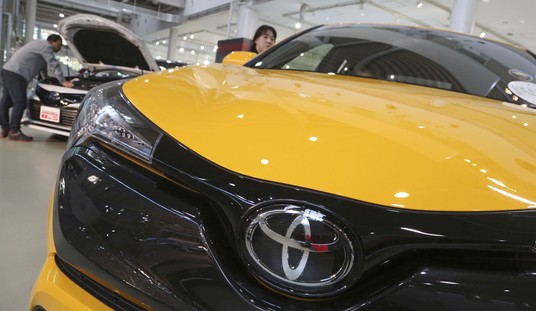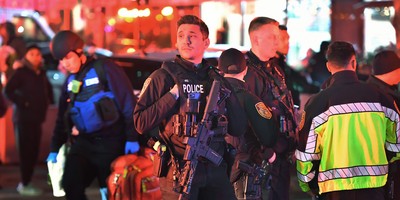Time for reopening? Let's reframe the question. Time for what to reopen? With what precautions? In which states and counties and communities? Mandatory reopening or voluntary?
And who really decides? Governors, mayors, the president? Business owners or consumers? Does anyone really expect what economist Arnold Kling calls "patterns of sustainable specialization and trade" to snap back into pre-COVID-19 shape?
Any effort to address questions yields the lesson that one-size-fits-all answers are ill-suited for a nation of 329 million people, half in million-plus metropolitan areas and the other half thinly spread out over a continent-sized landmass.
Nonetheless, much of the public debate assumes, Twitter-style, that there is just one decision to be made, presumably by President Donald Trump. And partisan affiliation shapes many Americans' responses.
Democrats, usually boastful of respecting alternative lifestyles, tend to insist that lockdowns stay in place. Republicans, sometimes depicted as deferential to traditional authority, tend to favor reopening.
Both sides operate from a position of massive and unavoidable ignorance. So do even the most respected experts. Epidemiologists' projections of mass deaths have been far off; speculation about modes of virus transmission has been largely discredited; ventilators, initially considered vital, now seem ill-suited to the virus.
Lockdowns ordered by state governors and encouraged by Trump were premised on a need to avoid overwhelming hospitals and caregivers. But outside New York City, hospitals are half-empty, and caregivers are being laid off.
Recommended
They've joined the 22 million who had filed for unemployment by mid-April -- Great Depression levels. Low-skill workers, whose wages have finally been rising more than average in the Trump years, have been hit hardest.
Polling shows majorities favor continued restrictions on reopening, especially if the question mentions the possibility of a second wave of infection. But there is also increasing evidence of people going out in public and chafing at restrictions.
The partisan tilt of responses reflects the incidence of the virus. It has struck hardest in New York and, though much less, in other large metro areas, and those able to continue working for pay tend to be white college graduates: mostly Democratic voters. Outside million-plus metros, it has caused few deaths, and those losing paychecks tend to be non-college grads: mostly Republican voters.
One-half of U.S. coronavirus deaths have been in New York and New Jersey. Nearly one-third have been in New York City, which, perhaps not coincidentally, has more than half of the nation's rail transit riders. In contrast, only 2 percent of U.S. deaths have been in Florida, whose lockdown was less stringent and imposed later but whose concentration was put on isolating the elderly.
Unlike the great influenza pandemic of 1918-19, which targeted young adults, COVID-19 has primarily killed the elderly, mostly those with aggravating medical conditions. For children, it's been no more deadly than the seasonal flu.
This points toward reopening schools and colleges and universities. As Purdue University President Mitch Daniels points out, COVID-19 "poses close to zero lethal threat" to young people. It points toward Florida Gov. Ron DeSantis' policy of isolating and providing masks for senior citizens, and away from New York Gov. Andrew Cuomo's policy of sending COVID-19-infected patients back to nursing homes.
And COVID-19 isn't the only threat to American lives. As Heather Mac Donald points out in the Spectator, "Lives are being lost to the overreaction," including those of cardiac and cancer patients who have been avoiding hospitals, needed tests, chemotherapy and organ transplants. Job losses have probably led to suicides and opioid abuse.
No one knows, or can know, how high these losses are or weigh them against possible losses from reopenings. Science provides no answers, only fallible models and projections with enormous margins of error. Weighing the risks of the virus and the lockdown is a job for private sector leaders and elected officials.
That's officials -- plural. Trump detractors have suddenly come to appreciate that the Constitution leaves the police power to impose quarantines and lockdowns in the hands of state governors, not the federal government.
Andrew Cuomo, facing a grim situation in New York, seems unready to reopen. DeSantis in Florida and Gov. Greg Abbott in Texas, both with more people and far fewer COVID-19 deaths than New York, are moving ahead to launch a reopening.
The final say, however, goes to the American people, perhaps ultimately as voters but more immediately as consumers. They may avoid restaurants if they're "more awkward, more expensive, and less fun," as The Atlantic's Derek Thompson predicts, but throng to churches and gyms, weighing risks against rewards. Sensible people will presumably factor in experts' and officials' recommendations. But in a self-governing republic, they're likely to come to their own conclusions.
Michael Barone is a senior political analyst for the Washington Examiner, resident fellow at the American Enterprise Institute and longtime co-author of The Almanac of American Politics.

























Join the conversation as a VIP Member